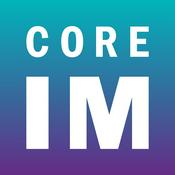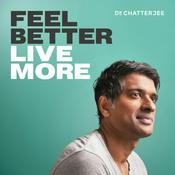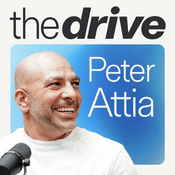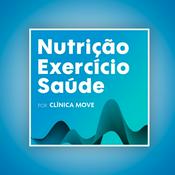GeriPal - A Geriatrics and Palliative Medicine Podcast

384 episódios

Rehab and Death in Skilled Nursing Facilities: Sarguni Singh, Christian Furman, and Lynn Flint
11/12/2025 | 49min
In this week's podcast, we sit down with Drs. Sarguni Singh, Christian Furman, and Lynn Flint, three authors of the recent Journal of the American Geriatrics Society article, "Rehab and Death: Improving End-of-Life Care for Medicare Skilled Nursing Facility Beneficiaries." The authors dive into the challenges facing seriously ill older adults discharged to Skilled Nursing Facilities (SNFs), where fragmented care transitions, misaligned Medicare policies, and inadequate access to palliative care often result in burdensome hospitalizations and goal-discordant care. The discussion highlights key barriers in Medicare's SNF and hospice benefits, including the inability to access concurrent hospice and SNF care, and explores solutions to improve care. Among the recommendations is leveraging Medicare's Patient Driven Payment Model (PDPM) to reimburse SNFs for providing palliative care, commissioning a Government Accountability Office (GAO) report on SNF utilization at the end of life, and piloting a model that allows time-limited concurrent hospice and rehabilitation care. Also, check out these two resources if you want a deeper dive: Our past podcast we did, now nearly 6 years ago, on the original NEJM paper, Rehabbed to Death. Joan Carpenter's article titled "Forced to Choose: When Medicare Policy Disrupts End-of-Life Care" in the Journal of Aging & Social Policy 👉 This episode of the GeriPal Podcast is sponsored by IU Health's Geriatrics Department, in partnership with Indiana University's School of Medicine, an amazing group, rich in innovative Geriatric Medicine. They are looking for physician faculty to join them in the inpatient and outpatient settings. To learn more about job opportunities, please click the following links: Physician & Advanced Provider Job Opportunity | Geriatrician opportunity at Eskenazi Hospital Physician & Advanced Provider Job Opportunity | Geriatrician opportunity at IU Health Fishers Hospital

Inflammaging: Brian Andonian, Sara LaHue, Joe Hippensteel
04/12/2025 | 50min
Six years ago we had John Newman on GeriPal to talk about Geroscience (Song choice Who Wants to Live Forever by Queen, perfect selection). John explained the basics of geroscience, what is it, what are the key theories in geroscience, what is senescence, why people who provide clinical care for older adults should care about geroscience, and potential therapeutics like metformin and rapamycin. Today we bring on three rising stars in Geroscience, Brian Andonian, Sara LaHue, Joe Hippensteel, to talk about one of the key pillars of Geroscience: inflammaging. We use this terrific paper they published in Geroscience as a springboard. We discuss: What is inflammaging? Chronic progressive low grade inflammation with aging. I try to get one of them to stake a claim that inflammaging should be the organizing principle of geroscience How does inflammaging operate in rheumatologic conditions like rheumatoid arthritis (Brian), neurologic conditions like traumatic brain injury (Sara), and critical illness (Joe). We talk about Post-ICU Syndrome (PICS) and relate inflammaging to our prior podcast with Wes Ely about his book Every Deep Drawn Breath. We also talk about how inflammaging is not just a factor in chronic conditions like diabetes or inflammatory bowel disease, which make intuitive sense, but also in acute conditions, like sepsis or traumatic brain injury in older adults. The state of the science on clinical and research tests for inflammaging - ready for prime time? What is the state of the science for therapeutics? Why should some anti-inflammatory therapeutics make us nervous in frail older adults? Inflammation developed evolutionarily for a reason. E.g. tthink of drugs that wipe out the immune system. The outsized discrepancy between non-FDA products marketed to consumers as anti-inflammaging and the state of academic Geroscience. We announce GeriPal's new lineup of skin care anti-inflammaging products! We discuss lifestyle interventions such as exercise, meditation, caloric restriction and intermittent fasting, and strength/resistance training. \We recognize the efforts of Clin-STAR in bringing together multidisciplinary aging researchers to advance aging research, including our guests. And what a joy to sing Billy Joel! Here's a link to the documentary I mentioned, which is on my list to see. -Alex Smith

The Chaplain and the Doctor: A Podcast with Betty Clark and Jessica Zitter
20/11/2025 | 46min
In this week's episode, we delve into the powerful documentary The Chaplain and The Doctor with two extraordinary guests: Betty Clark, the chaplain at the heart of the film, and Dr. Jessica Zitter, the physician and filmmaker who brought this story to the screen. The film provides a deeply moving look into the ways personal stories and biases shape our interactions in healthcare. Through our conversation with Betty and Jessica, I gained a valuable insight: the narratives we carry within ourselves—whether conscious or unconscious—act as invisible forces that influence how we engage with patients and colleagues. I also learned that recognizing these stories and the biases they may produce, rather than avoiding them, can foster more genuine and empathetic care. They also may lead to deep friendships, as is clearly shown between Betty and Jessica. I love both this podcast episode and the film itself, as they shine a light on the deeply human—and oftentimes flawed—experience of working in healthcare. They remind us of the vital role of storytelling in shaping how we care for patients, and the often-overlooked yet essential contributions of chaplains in healthcare settings. Betty and Jessica's reflections underscore how chaplains bring compassion and humanity to the medical team, offering emotional and spiritual support to patients and providers alike. If you're interested in watching The Chaplain and The Doctor during its festival tour, or would like to host a screening at your own institution, I encourage you to visit the film's website at TheChaplainandTheDoctor.com. This episode of the GeriPal Podcast is sponsored by UCSF's Division of Palliative Medicine, an amazing group doing world class palliative care. They are looking for physician faculty to join them in the inpatient and outpatient setting. To learn more about job opportunities, please click here: https://aprecruit.ucsf.edu/apply/JPF05811 ** NOTE: To claim CME credit for this episode, click here **

A Strategic Path Forward for Hospice & Palliative Care: Ira Byock, Kristi Newport, Brynn Bowman
13/11/2025 | 53min
In June of 2025, hospice and palliative care pioneer Ira Byock published a white paper outlining the urgent challenges facing the field today. In a nutshell, he expressed concerns that the quality of hospice care in the United States has become highly variable, with disturbing frequency of unethical practices and avaricious owners. He also raised concern that the rapid increase in palliative care program growth during the first two decades of this century has stalled, leaving us with understaffed programs that are often inadequately trained. Along with Ira, we've invited Kristi Newport, a palliative care doctor and Chief Medical Officer of the American Academy of Hospice and Palliative Medicine, and Brynn Bowman, Chief Executive Officer of the Center to Advance Palliative Care, to discuss these issues and outline a strategic path forward for the field. In particular we talk about Ira's four-part solution to transform the field and restore its integrity: (1) publishing clear clinical and programmatic standards, (2) making meaningful data publicly available to ensure transparency and accountability, (3) fostering quality-based competition among providers, and (4) embracing the authentic brand of hospice and palliative care—expert care that alleviates suffering and fosters well-being. So take a listen and dive a little deeper with these resources, and dont forget, you too can get involved in AAHPM (click here for opportunities): Ira's paper titled "A Strategic Path Forward for Hospice and Palliative Care: A White Paper on the Potential Future of the Field" Our previous podcast on "Is Hospice Losing Its Way" Our previous podcast on Private Equity Gobbling Up Hospices plus Hospice and Dementia with Melissa Aldridge, Krista Harrison, & Lauren Hunt CAPC's Serious Ilness Scorecard - a state-by-state look at palliative care capacity CAPC's second annual Palliative Pulse survey offers insight into how palliative care professionals across the country are feeling this year and what they're focused on National Hospice Locator and TCMTalks Podcast by Chris Comeaux and Cordt Kassner

Palliative Care in Sickle Cell: Craig Blinderman, Stephanie Kiser, Eberechi Nwogu-Onyemkpa
06/11/2025 | 47min
Today's topic on palliative care for sickle cell disease may raise eyebrows with some of you. You might think, wait, now we're doing sickle cell? On top of liquid cancer and transplant, kidney disease, liver disease, and survivorship? Where does it end? Do we have staff for all of this? Well I implore you, dear listeners, to keep an open mind and listen to this podcast. Our guests do a fabulous job of stating the case for palliative care in sickle cell disease, to the point that we ask: why haven't we been doing this all along? Our guests today are Craig Blinderman, Stephanie Kiser, Eberechi Nwogu-Onyemkpa, three palliative care docs who have been advancing the practice in palliative care for sickle cell for a long time. Our discussion ranges from what is sickle cell; to outcomes; to social determinants and discrimination; to PCAs, ketorolac, and bupenorphine; and to the importance of the interdisciplinary team. I would also encourage you to check out Eberechi's NEJM Perspective on Involving Palliative Care to Improve Outcomes in Sickle Cell, which includes a table of the challenges and action items needed to move the field forward. I'd also encourage you to sample this AAHPM Flight on the same topic (we learned that a flight is similar to a flight of drinks - a quick sampling). As Eberechi notes at the start, we should be grateful for the community of people who are advancing palliative care in sickle cell. Thank you for being a friend (song hint!). -Alex Smith
Mais podcasts de Saúde e fitness
Podcasts em tendência em Saúde e fitness
Sobre GeriPal - A Geriatrics and Palliative Medicine Podcast
Ouça GeriPal - A Geriatrics and Palliative Medicine Podcast, Cartas de um Terapeuta e muitos outros podcasts de todo o mundo com o aplicativo o radio.net

Obtenha o aplicativo gratuito radio.net
- Guardar rádios e podcasts favoritos
- Transmissão via Wi-Fi ou Bluetooth
- Carplay & Android Audo compatìvel
- E ainda mais funções
Obtenha o aplicativo gratuito radio.net
- Guardar rádios e podcasts favoritos
- Transmissão via Wi-Fi ou Bluetooth
- Carplay & Android Audo compatìvel
- E ainda mais funções


GeriPal - A Geriatrics and Palliative Medicine Podcast
baixe o aplicativo,
ouça.




































